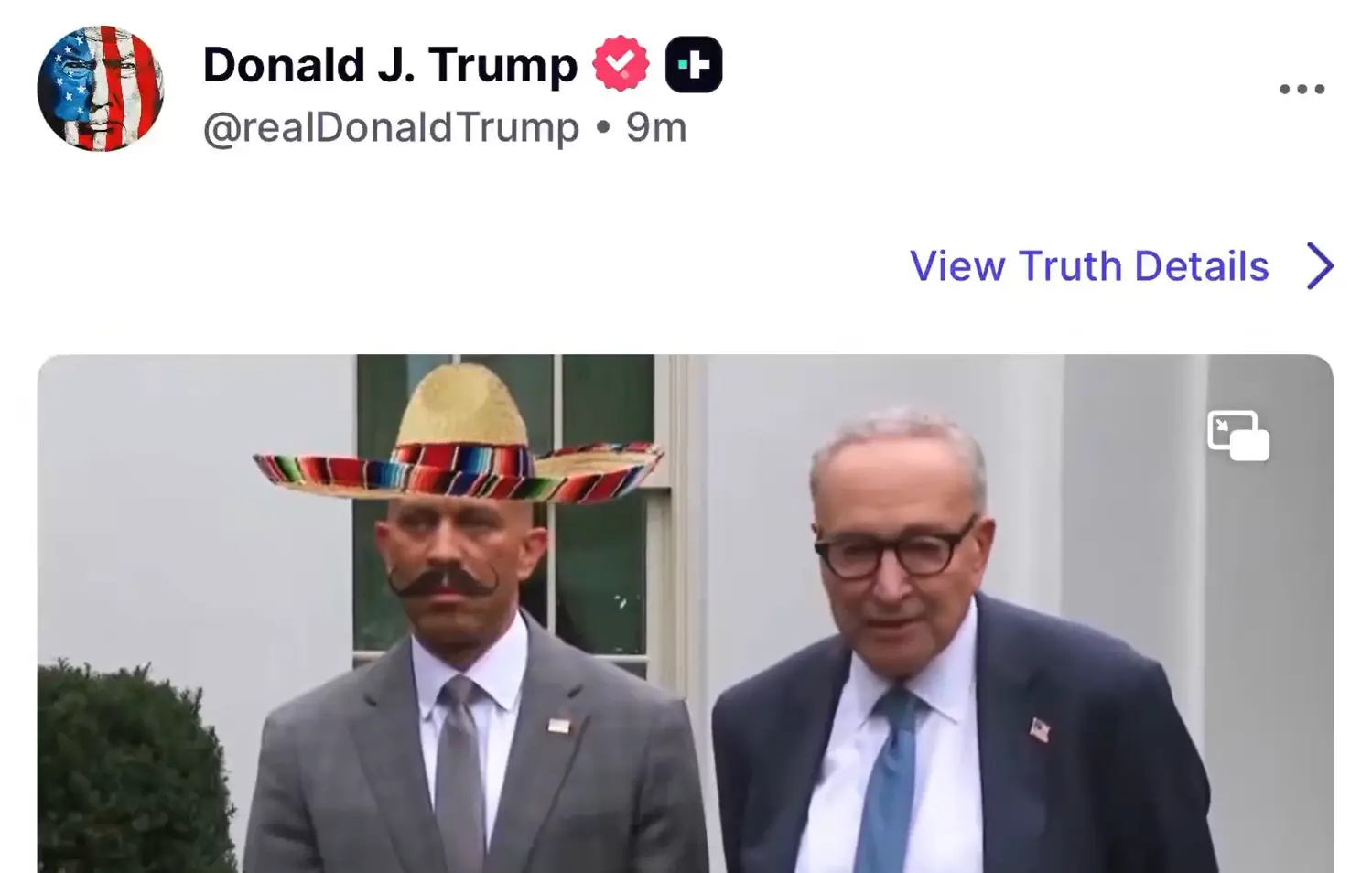
Trump’s AI video targets Schumer and Jeffries amid shutdown threat over ACA subsidies. A fierce political clash risks service cuts and premium hikes for millions.
Why Trump’s AI Video and ACA Clash Are Fueling a Fierce Shutdown Showdown
Published: 30-09-2025 | By: Rapido Updates
Trump’s AI Video Sparks Outrage Ahead of Shutdown Deadline
Trump AI Video Is Fueling a Shutdown – Just days before the September 30 deadline to avoid a federal government shutdown, President Donald Trump posted an AI-generated video on Truth Social that mocked Senate Minority Leader Chuck Schumer and House Minority Leader Hakeem Jeffries. The video depicted Schumer using expletives and Jeffries wearing a sombrero and mustache, suggesting Democrats were pushing free healthcare for undocumented immigrants to gain votes.
The clip, which altered footage from a press conference, included a deepfake voiceover of Schumer saying Democrats needed new voters and were offering healthcare to “illegal aliens” to win support. The video was widely criticized as racist and misleading, with Democratic leaders responding sharply on social media and in interviews.
Schumer posted on X, “If you think your shutdown is a joke, it just proves what we all know: You can’t negotiate. You can only throw tantrums.” Jeffries responded with a photo of Trump and Jeffrey Epstein, captioned “This is real,” and later condemned the video as “disgusting” on MSNBC.
The Budget Battle: ACA Subsidies at the Center
The shutdown threat stems from a partisan clash over a continuing resolution to fund the government. Democrats are demanding an extension of Affordable Care Act (ACA) subsidies, which are set to expire at the end of the year. Without action, premiums could rise for over 20 million Americans.
Republicans, who currently control the White House, House, and Senate, have rejected the proposal, arguing that it amounts to providing benefits for non-citizens. Trump’s AI video amplified this narrative, portraying Democrats as prioritizing undocumented immigrants over American taxpayers.
Vice President JD Vance and House Speaker Mike Johnson warned that failure to pass a funding bill could disrupt essential services, including nutrition programs and disaster aid. Despite Republican control, they placed blame on Democrats for the impasse.
Deepfakes and Political Messaging: A Growing Concern
The use of AI-generated media in political discourse is raising alarms among experts and lawmakers. Trump’s video is part of a growing trend of deepfake content being used to influence public opinion and attack opponents. Just days earlier, Trump shared and deleted another AI video promoting a far-right conspiracy theory about “medbeds.”
Analysts warn that such content can blur the line between satire and misinformation, especially when shared by high-profile figures. The Schumer-Jeffries video included offensive stereotypes and false claims, sparking debates about platform responsibility and ethical boundaries.
Calls for regulation of AI-generated political content are growing, with some lawmakers urging tech platforms to implement stricter moderation policies and transparency measures.
Public Reaction and Media Coverage
The video and shutdown debate have dominated headlines, with coverage from outlets including Forbes, CNN, and Daily Mail. Public reactions have been polarized, with Trump supporters praising the video as “truthful satire” and critics condemning it as racist and inflammatory.
Social media platforms saw trending hashtags like #ShutdownShowdown, #AIPropaganda, and #SaveACA. Advocacy groups have launched campaigns urging Congress to extend ACA subsidies and protect vulnerable communities from premium hikes.
Meanwhile, fact-checkers and media watchdogs are working to debunk false claims and educate the public about the dangers of deepfake content in political messaging.
What’s Next: Countdown to Crisis or Compromise?
As the shutdown deadline approaches, negotiations remain tense. Democrats insist on including ACA subsidy extensions in the funding bill, while Republicans demand cuts and reject what they call “woke spending.”
Trump’s AI video has added fuel to the fire, making bipartisan compromise even more difficult. If no agreement is reached, millions could face disruptions in healthcare, food assistance, and emergency services.
Observers are watching closely to see whether cooler heads will prevail or if the U.S. will enter another costly government shutdown. The outcome will not only affect policy but also shape the political landscape heading into 2026.